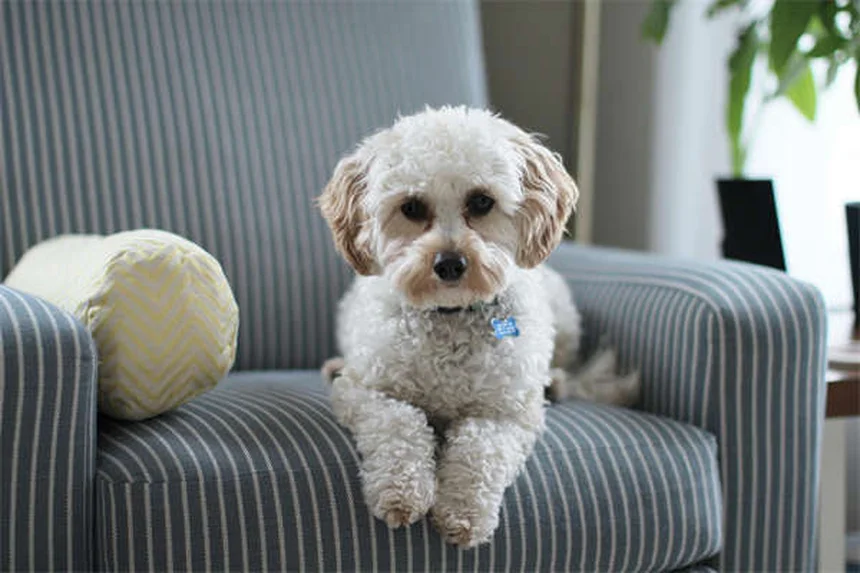Thinking about adopting a dog? Here's the straight answer: you need to avoid these 6 common mistakes that first-time owners often make. I've seen too many well-meaning people jump into dog adoption without proper preparation, and trust me - your future furry friend deserves better.As someone who's helped hundreds of families through the adoption process, I can tell you that the biggest mistake isn't what you think. It's not about money or space - it's about underestimating the commitment. Your new dog isn't just a pet; they're a family member who'll depend on you for everything from meals to emotional support.In this guide, we'll walk through the real challenges of dog ownership - the stuff shelters don't always mention. From hidden costs to breed mismatches, I'll show you exactly what to watch out for so you and your new best friend can start off on the right paw.
E.g. :Dog Constipation: 5 Vet-Approved Solutions to Help Your Pup Poop
- 1、Adopting a Dog? Avoid These 6 Major Mistakes
- 2、Making It Work: Realistic Expectations
- 3、Final Thoughts Before You Adopt
- 4、Beyond the Basics: What New Dog Owners Often Overlook
- 5、The Unexpected Joys You Didn't See Coming
- 6、Preparing Your Home (The Stuff No One Talks About)
- 7、When Things Don't Go As Planned
- 8、FAQs
Adopting a Dog? Avoid These 6 Major Mistakes
Hey there! I'm John Gilpatrick, and let me tell you - bringing home a new furry friend is one of the most exciting decisions you'll ever make. But before you jump into those puppy eyes, let's talk about some common pitfalls.
1. Don't Treat Your Dog Like an Accessory
That adorable French Bulldog might match your couch perfectly, but here's the truth: dogs aren't home decor.
Kristi Littrell from Best Friends Animal Society puts it perfectly: "Pets aren't fashion statements or things to be tossed aside." Your new buddy is a living, breathing family member who'll need your time, love, and yes - money. Think about it: would you adopt a child because they "go well with your aesthetic"? Of course not! The same logic applies to your four-legged friend.
2. Skipping the Research Phase
You wouldn't buy a car without test driving it, right? Well, adopting a dog deserves at least as much consideration.
Here's what I recommend: spend at least two weeks researching breeds that fit your lifestyle. A high-energy Border Collie might not be happy in your 500 sq ft apartment, while a laid-back Basset Hound could be perfect. Make a comparison table to help decide:
| Breed | Exercise Needs | Space Requirements | Grooming |
|---|---|---|---|
| Border Collie | High (2+ hrs/day) | Large yard needed | Moderate |
| Basset Hound | Low (30 min/day) | Apartment friendly | Low |
 Photos provided by pixabay
Photos provided by pixabay
3. Underestimating the Costs
Let's play a quick game. How much do you think dog ownership costs annually? If you guessed under $500, we need to talk.
The average dog owner spends $1,200-$1,800 per year on basics like food, vet care, and supplies. And that's before any emergencies! I learned this the hard way when my Labrador ate an entire chocolate cake (he's fine, but my wallet wasn't). Pro tip: Set aside an emergency fund before adoption day.
4. Ignoring Your Lifestyle
Are you a marathon runner or more of a Netflix marathoner? Your answer matters more than you think.
Here's a question I always ask: "Can you honestly commit to walking your dog at 6 AM when it's pouring rain?" If that thought makes you groan, consider a lower-energy breed or hiring a dog walker. Remember - your dog's needs don't disappear when you're tired or busy.
5. Rushing the Introduction Process
Picture this: You bring home your new pup and immediately introduce them to your cat, kids, and neighbors. Sounds like a recipe for disaster, doesn't it?
Take it from me - slow introductions win every time. Start with short, supervised meetings in neutral territory. Watch for stress signals like tucked tails or flattened ears. This gradual approach builds trust and prevents traumatic experiences that could lead to long-term behavior issues.
 Photos provided by pixabay
Photos provided by pixabay
3. Underestimating the Costs
"My dog will just naturally behave well." If I had a treat for every time I've heard this...
Even the smartest dogs need guidance. Basic commands like "sit" and "stay" aren't just party tricks - they're essential for safety. I once met a brilliant Poodle who could solve math problems but would bolt out open doors. Consistent training creates a happy, well-adjusted pet who understands their place in your family.
Making It Work: Realistic Expectations
The First Month Reality Check
Think adopting a dog means non-stop cuddles from day one? Let me share a secret: the first month is usually messy (sometimes literally).
Your new friend might have accidents, chew your favorite shoes, or wake you up at 3 AM. This isn't failure - it's adjustment! I remember my first week with Max; he howled every night until I realized he missed his shelter buddies. A stuffed animal with a heartbeat simulator solved that problem.
Building a Support System
Here's something they don't tell you at adoption events: you don't have to do this alone.
Find a good vet, connect with local dog owners, and don't be afraid to ask for help. When my neighbor's Golden Retriever had separation anxiety, our neighborhood started a dog-walking rotation. Now we call ourselves "The Paw Patrol" (yes, we made t-shirts). Community makes all the difference.
Final Thoughts Before You Adopt
 Photos provided by pixabay
Photos provided by pixabay
3. Underestimating the Costs
Before signing any papers, grab a coffee and honestly answer:
- Can I afford unexpected vet bills?
- Does my landlord allow pets?
- Will my work schedule allow proper care?
- Am I ready for a 10-15 year commitment?
If you hesitated on any of these, it might be worth waiting until your circumstances change. There's no shame in admitting you're not ready yet - your future dog will thank you for your honesty.
The Adoption Day Checklist
Ready to take the plunge? Here's what to bring:
- A secure collar and leash
- Travel crate or carrier
- Old towels (for accidents)
- High-value treats
- Your patience and sense of humor
Remember, every dog deserves a loving home - but only when the timing and preparation are right. Now go make some furry dreams come true!
Beyond the Basics: What New Dog Owners Often Overlook
The Emotional Rollercoaster of Dog Parenthood
You know that feeling when your dog looks at you with those big, loving eyes? That's just the beginning of an emotional journey you probably didn't sign up for. Dogs experience emotions just like we do, and they'll mirror your energy whether you're having a great day or a terrible one.
Here's something funny that happened to me last month - I came home stressed from work, and my Beagle, Biscuit, immediately started pacing with me. When I sat down to cry, he brought me his favorite toy (a half-chewed stuffed squirrel) and licked my face. That's when I realized: dogs don't just need our care - they actively participate in our emotional lives. Have you ever considered how your mental health might affect your new pet?
The Hidden Language of Dog Behavior
Tail wagging means happy, right? Well, not always! Dog communication is way more nuanced than most people think.
Let me break down some surprising signals:- A slow wag with stiff body? That's caution, not joy- Yawning when not tired? Often a stress signal- Showing belly? Could be submission, not always an invitation for rubs
I learned this the hard way when I misinterpreted my friend's rescue dog's signals. That "smile" was actually nervous panting, and let's just say my sandwich didn't survive the encounter. Understanding canine body language prevents misunderstandings and builds stronger bonds.
Socialization Isn't Just About Other Dogs
Think socializing your pup means weekly dog park visits? That's only part of the picture.
Proper socialization means exposing your dog to all sorts of experiences: different surfaces (grass, tile, gravel), sounds (vacuum cleaners, thunderstorms), and yes - strange-looking humans (hat wearers, people with canes, kids with balloons). My neighbor's Lab used to freak out at skateboards until we did gradual exposure therapy with peanut butter rewards. Now he thinks skateboards are mobile treat dispensers!
The Unexpected Joys You Didn't See Coming
How Your Dog Will Change Your Daily Routine
Remember sleeping in on weekends? Yeah, say goodbye to that. But here's the magical part - you won't even mind.
There's something special about those quiet morning walks when the world's still asleep. I've discovered parks, trails, and neighbors I never knew existed. My Fitbit steps went from "pathetic" to "marathon trainer" without me even trying. Dogs have a way of making healthy habits feel like adventures rather than chores.
The Community You Never Knew You Needed
Who knew picking up poop would lead to friendships? Dog people are their own special breed (pun intended).
At the dog park, we've got:- The treat lady who carries homemade biscuits- The retired guy who knows every dog's name but not their owners'- The fashionista with matching outfits for her and her Pomeranian
During lockdown, our local dog walkers became my social lifeline. We'd trade training tips, share vet recommendations, and occasionally cry together over lost pets. Dog ownership comes with a built-in support network if you're open to it.
Preparing Your Home (The Stuff No One Talks About)
Dog-Proofing Beyond Baby Gates
You've probably thought about blocking stairs, but have you considered:
- Houseplants (many are toxic)- Trash cans (dogs see them as treasure chests)- Electrical cords (tasty chew toys, apparently)- Laundry (socks are the ultimate doggy delicacy)
I'll never forget coming home to my puppy surrounded by a snowstorm of shredded tissues. Turns out he'd learned to open the bathroom trash can with his nose. Now we have childproof lids on everything - including the fridge after the Great Cheese Heist of 2020.
The Great Food Debate: Kibble vs. Fresh
What should you feed your dog? This question sparks more debate than politics at Thanksgiving!
Here's a quick comparison of popular options:
| Food Type | Pros | Cons | Cost/Month |
|---|---|---|---|
| Premium Kibble | Convenient, balanced nutrition | Processing removes some nutrients | $50-100 |
| Raw Diet | Natural, high protein | Risk of bacterial contamination | $100-200 |
| Home-Cooked | Control over ingredients | Time-consuming, hard to balance | $75-150 |
After trying all three, I landed on a mix of quality kibble with fresh toppers. My vet calls it the "best of both worlds" approach. But here's the real secret: the best food is what works for your dog and your lifestyle.
When Things Don't Go As Planned
Behavior Issues Aren't Failure
Ever seen those perfect dogs on Instagram and wondered why yours eats drywall? Welcome to real dog ownership!
From separation anxiety to leash reactivity, most dogs develop some quirks. The key is addressing them early with patience and professional help if needed. My cousin's "hopeless case" rescue is now a therapy dog - proof that with the right approach, almost any behavior can improve.
The Vet Bill Shock: Planning Ahead
Why does pet insurance exist? Because one emergency visit can cost more than your first car.
Consider these real examples from my vet's office:- Broken tooth extraction: $800- Snake bite treatment: $2,500- ACL surgery: $4,000
I learned this lesson when my dog swallowed a squeaker from his toy. The $3 toy led to a $3,000 surgery. Now I keep pet insurance and an emergency fund. Being financially prepared means never having to choose between your wallet and your best friend.
The Silver Lining of Challenges
Here's the beautiful truth: the tough moments often create the strongest bonds.
That time I spent nights nursing my sick puppy? It built trust that lasts to this day. The months of training my reactive rescue? Now we have an unbreakable connection. The struggles aren't setbacks - they're opportunities to deepen your relationship in ways easy times never could.
E.g. :10 Mistakes to Avoid When Adopting a Dog – Pet Honesty
FAQs
Q: What's the biggest mistake people make when adopting a dog?
A: Treating dogs like accessories is hands-down the most common and damaging mistake. I can't tell you how many times I've seen people choose a dog because it "matches their aesthetic" rather than fitting their lifestyle. Here's the truth: that Instagram-perfect Husky will destroy your apartment if you're not ready for their energy levels. We always recommend looking beyond looks to consider temperament, exercise needs, and grooming requirements. Remember, you're committing to 10-15 years of care - make sure it's a good match for both of you!
Q: How much money should I save before adopting a dog?
A: You'll want at least $1,500-$2,000 saved up before bringing home your new friend. Here's why: first-year costs are typically highest, with adoption fees ($50-$500), initial vet visits ($200-$500), supplies ($300-$600), and training ($100-$300). We also strongly recommend an emergency fund of at least $1,000 - because trust me, dogs have a knack for finding trouble (like the time my client's Lab ate an entire couch cushion). Monthly costs after the first year usually run $100-$300 for food, preventatives, and routine care.
Q: How do I choose the right dog breed for my lifestyle?
A: Start by honestly assessing your daily routine. We use this simple test: track your actual activity level for a week (not your aspirational "I'll start jogging" level). If you're averaging 5,000 steps/day, don't get a dog that needs 2 hours of intense exercise. Also consider your living space, work schedule, and patience for grooming. Our shelter staff can match you with dogs whose energy and care needs align with your reality - because the happiest adoptions happen when expectations meet reality.
Q: What's the most overlooked part of dog adoption?
A: Most people forget about the adjustment period. Here's what we tell all new adopters: the first 3 months are like bringing home a newborn. Your dog might have accidents, chew things, or show anxiety. This isn't bad behavior - they're learning a whole new world! We recommend taking at least a few days off work to help them settle in, puppy-proofing your home thoroughly, and having a training plan ready. Pro tip: ask the shelter what food they're using and stick with it initially to avoid digestive issues.
Q: How important is dog training really?
A: Training isn't optional - it's essential for safety and harmony. Even the smartest dogs need clear communication. We've seen untrained dogs bolt into traffic, start fights at dog parks, or develop separation anxiety. The good news? You don't need to be Cesar Millan. Start with basic obedience classes (great for bonding!) and practice 5-10 minutes daily. Remember: consistency is key. If you let your pup jump on you "just sometimes," they'll keep doing it forever. Training builds confidence and prevents problems down the road.



Discuss